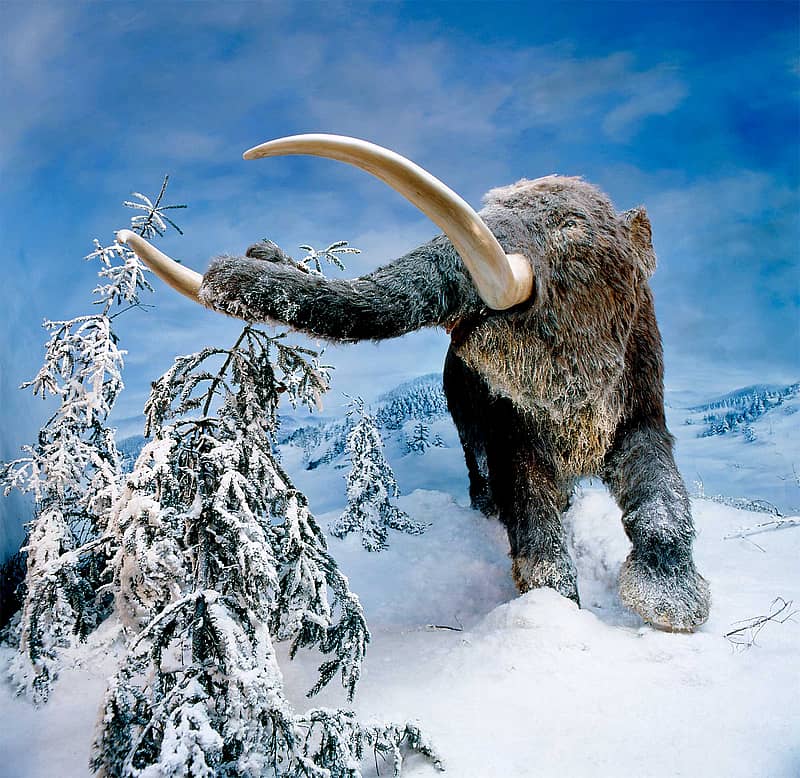The Mashantucket Pequot Museum & Research Center features 85,000 square feet of permanent, indoor exhibitions including life–size dioramas, films, and interactive computer programs. Highlights of the permanent exhibits include

Learn about the contemporary Mashantucket Pequot Tribal Nation through photographs, artifacts, maps, and a topographical model of the reservation.

Native people across North America have different creation stories; nine Native American artists provided contemporary works of art to visually represent their tribe’s creation story. Complementing the artwork, an adjacent mini–theater shows storytellers relating parts of their own creation stories in their Native languages.

The changing natural environment influenced Native daily life 6,000 years ago. Visitors can view four dioramas reflecting each season in different time periods and learn how life was adapted to each. A 20–seat theater shows a video about pre–historic tools from the Northeast, their uses, and how they were made.

With the arrival of the Europeans, life changed dramatically for Native people. These exhibits explore the complex relationships, changes, and conflicts that arose with the newcomers.

In this area, visitors learn what life was like for Pequot tribal members living on and off the reservation from the late 1600s to the 1980s. Highlights include an outdoor 18th century farmstead, a visit to the re-created 1940s home of tribal member Aunt Matt, and a look at the Pequot community through the 1970s. The film, Bringing the People Home, explains how the tribe rebuilt their nation and achieved Federal recognition in 1983.
The farmstead is about two acres in size and includes a vegetable garden, herb garden, orchard, a root cellar and a small outbuilding that may have been an animal pen. Surrounding the property are wild plants, shrubs and trees that provide a glimpse into this Pequot family’s sources of food and useful materials for crafts and other lifestyle needs.

Journey back in time through the simulated glacial crevasse. Travel down into a glacier with dripping water, chilling air, and the sounds of an actual glacier, with its creaking ice and whistling winds. Then learn more about the last ice age and its effects on the landscape.

Look into the eyes of life–size replicas of dire wolves, a mastodon, and a giant beaver–animals that inhabited this part of the continent more than 11,000 years ago. Life–like hunters pursue caribou among streams and rock outcroppings in a scene from ancient life in a cold climate.

Observe daily life in a recreated 16th-century Pequot village, pre-and post-European contact. Walk among the trees, wigwams, and people who are cooking, talking, weaving, and working. Hear natural sounds and smell the aromas of the woodlands and campfires. All the figures were life-cast from Native American people; the traditional clothing, ornamentations, and wigwams were made by Native craftspeople. Individual audio tours are available for visitors. Two adjacent galleries, Pequot Society and Daily Life, further explore social and political organization, language, and objects from the Museum’s collection.

In 1637, the colonies of Connecticut and Massachusetts attacked the Mystic fort, killing approximately 600 Pequots. The Witness, a 30–minute, 70–mm film, graphically dramatizes the events surrounding the Pequot War. The film includes scenes of violence which may not be appropriate for children under 12.
The Neetôpáwees exhibit was displayed at the museum from October 2012–April 2013. At its conclusion we created an online rendition to virutally convey the beauty and importance of the collection.
Learn more about the Pequot Museum’s special online exhibit of Neetôpáwees: Dolls as Ambassadors of Native Culture!
Visit the Gathering Space within the museum and see if you can identify the three “mishoons”.
Learn more about Mission Mishoon–The Dugout Canoe of the Pequots!